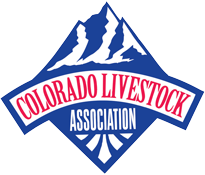Kellee Mitchell, Colorado Livestock Association
When the first federal census was taken in 1790, more than 90 percent of all Americans were farmers and agriculture was far and away the leading industry and major employer. Revolutionary changes in the 1800s transformed the lives of the nation’s farm families, as the industrial revolution shifted population, wealth, and power to the cities. In the 1850s young men went west in search of their fortunes on the agricultural frontier, but national attention and the American dream increasingly still shifted to the city.
Jump ahead to 2016 – Farm and ranch families comprise just 2 percent of the U.S. population. Approximately 22 million American workers produce, process, sell and trade the nation’s food and fiber but only 4.6 million of those people live on farms or ranches.
Agriculture produces 262 percent more food with 2 percent fewer inputs (labor, seeds, feed, fertilizer, etc.), compared with 1950 and is one of the United States’ most important industries, employing more than 24 million workers or 17 percent of the country’s total work force. The livestock industry feeds billions of people and employs 1.3 billion people which means about 1 in 5 people on Earth work in some aspect of livestock farming. Consumers spend $547 billion for food originating on U.S. farms and ranches and of each dollar spent, the farmer’s share is approximately 31 cents. The rest goes for costs beyond the farm gate: wages and materials for production, processing, marketing, transportation and distribution.
As change continues the world population is expected to jump from 7.2 billion to 9.6 billion by 2050. Is it obvious that people still expect to eat every day? Do they expect to always have access to products they use every day or need for medical purposes? Do they know farmers will need to double food production by then to keep pace and by-products will have to continue to be processed?
The goods produced and the means by which they are created vary greatly. However, many people do not realize that many aspects of theirs and human life depend on numerous types of agriculture. These are some of the same people who fire up their social media newsfeed and are drawn to believe everything they read (true or untrue) about how bad our industry is. How do we make them see?
Through the efforts of CLA, other industry organizations and members we are trying to change their perspective by demonstrating, teaching and participating in events to share how important agriculture is to EVERYONE, 24/7 – 365. We host tours for our urban legislators and interested groups, staff participate in the “Pasture to Plate” tour with the Colorado Beef Council. CLA sponsors teachers to attend the Food, Fiber & More – Agriculture in the Classroom Summer Institute, we help fund and write articles for the Colorado Reader, which is sent out to every elementary school in Colorado, and CLA staff reads about agriculture in the classroom to young urban school children. We host free Educational Regional Symposiums across Colorado. We volunteer with The American Beef Battalion, Pedal the Plains, Colorado State Fair, Greeley Farm Show and the National Western Stock Show. Ag Day at the Capitol has become one of the most popular events under the gold dome as CLA and other Colorado Ag Council members feed hundreds of people at the state house all in the effort to promote our industry.
I’d like to close with a quote from author and biochemist, Isaac Asimov, that may help put things in perspective when you are working to inform folks about the livestock industry.
“It is the obvious that is so difficult to see most of the time. People say, It’s as plain as the nose on your face… But how much of the nose on your face can you see, unless someone holds a mirror up to you?”
